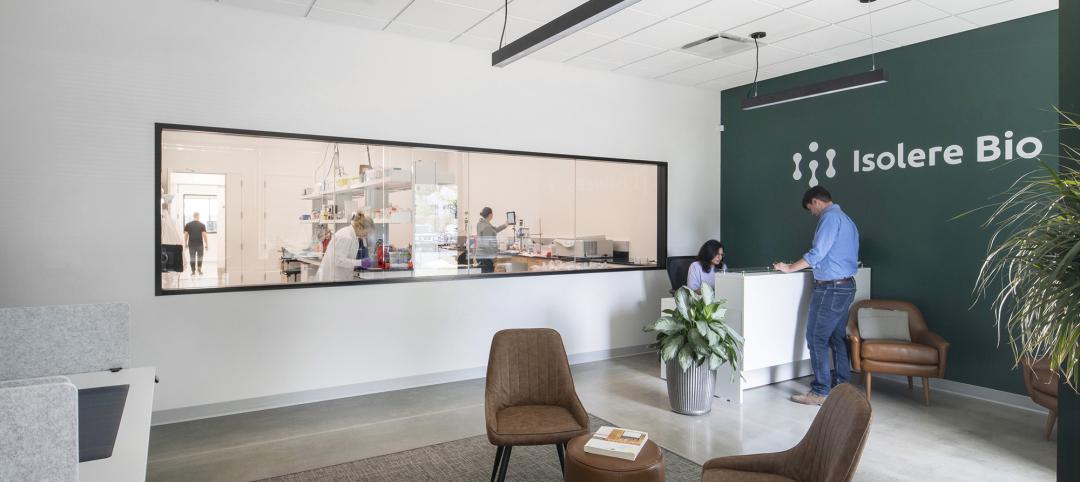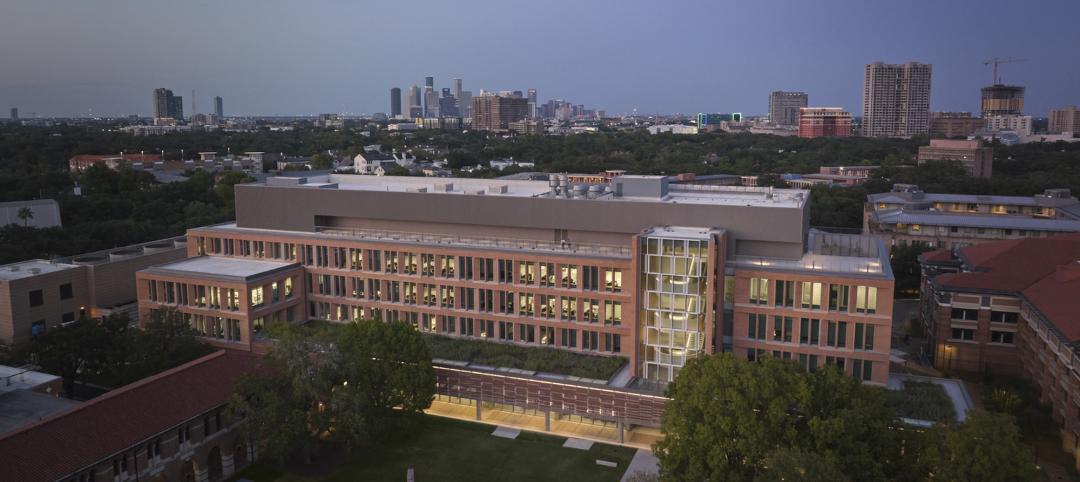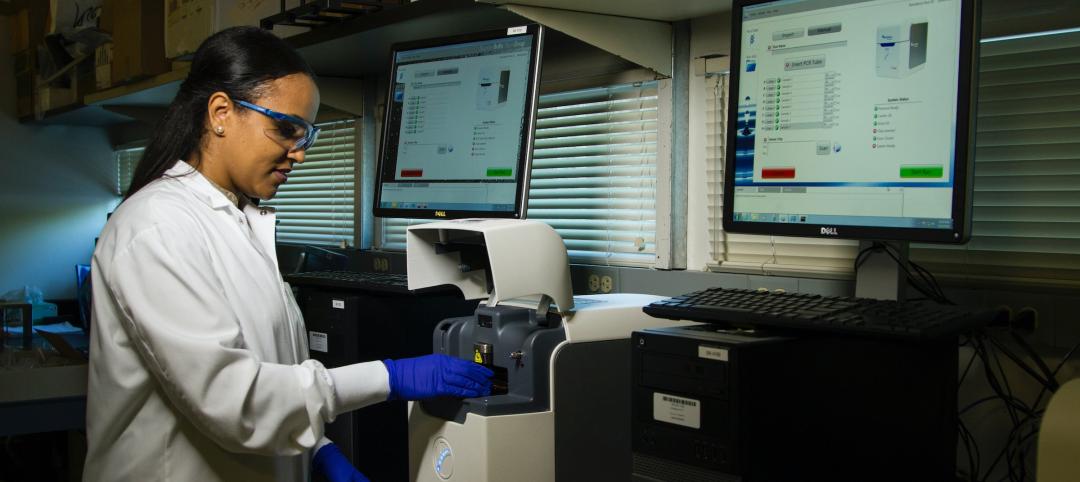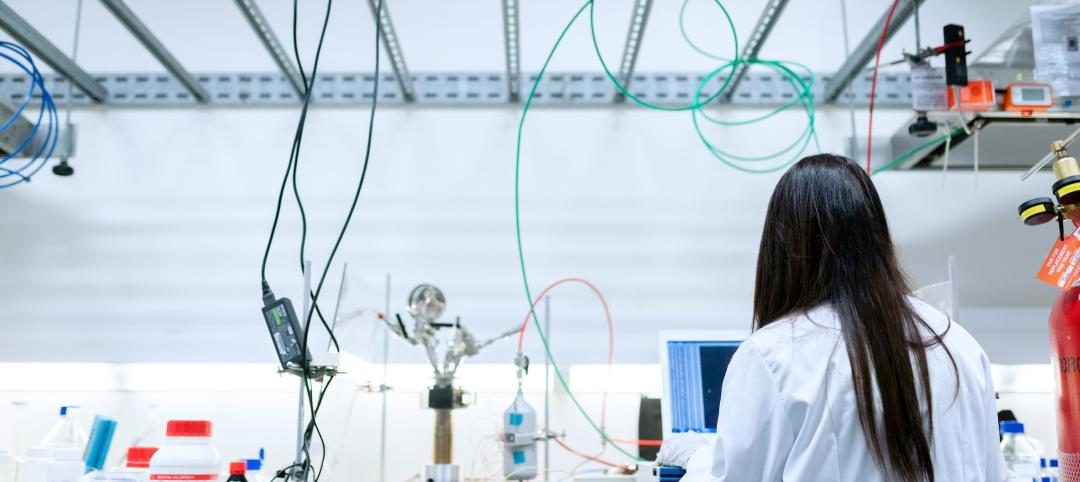The coronavirus pandemic is accelerating momentum nationwide for life sciences real estate demand, according to a recent report from JLL's Healthcare and Life Sciences team.
The report, 2020 Life Sciences Real Estate Outlook, outlines the nation's top life sciences cluster hubs (Boston and San Francisco top the list) and pinpoints emerging markets for life sciences real estate.
Audrey Symes, Research Director, JLL Healthcare and Life Sciences, joined BD+C's David Barista on the August 6 episode of The Weekly to discuss the primary drivers of growth across the nation's life sciences cluster hubs. Watch the highlights here:
Here are highlights from JLL's 2020 Life Sciences Real Estate Outlook (text from JLL):
Rankings of the top U.S. life sciences cluster hubs were released today in the JLL 2020 U.S. Life Sciences Outlook, which also tracks the progress of up-and-coming life science markets that are fast becoming options of choice for life science companies and investors alike. Emerging hubs are looking to real estate to boost productivity as they anticipate growth of the worldwide prescription drug market, expected to surpass $1 trillion by 2022.
Boston, San Francisco, and San Diego retained their rankings as leaders among U.S. life sciences ecosystems and top contenders for venture capital investment, capturing 70% of all venture capital (VC) investment in 2019. Boston and San Francisco also lead the other clusters significantly with respect to development, with 2.7 million square feet (MSF) and 4.0 MSF respectively under construction.
Massive infusion of venture capital is also quick to promote life sciences employment growth. In 2019, 11 of 14 cluster markets set or approached record VC funding levels, a significant positive for the reinforcement of cluster market strength, resilience and security.
New York, Los Angeles, and Philadelphia increased their cluster scores since 2019, reaching new peaks in venture capital funding and life sciences employment. As speed to market accelerates for many pharmaceuticals, proximity to incubators at major research institutions has also supported developing clusters such as Raleigh-Durham, Houston, and Maryland, which have attracted recent interest from developers such as ARE, Longfellow and Hines.
Additionally, the race for development of COVID-19-related vaccines is already beginning to energize demand in pharma-heavy New Jersey, a trend that should spread to more markets as 2020 progresses.

“Each cluster has a different specialty and occupies its own point along the maturity spectrum, providing a diverse range of options for investors and occupiers alike,” said Roger Humphrey, Executive Managing Director, JLL Life Sciences. “But they do a share a major commonality. Each cluster features a highly-educated workforce and ties to the research community, which in turn attracts a steady stream of multi-sourced investment that creates a need for institutional real estate.”
Beyond COVID-19’s recent acceleration of innovation in the life sciences industry, life-enhancing pharmaceuticals and medical devices have been increasingly sought out by Millennials reaching the peak of their earning potential and seeking personalized experiences.
And, the upcoming expiration of a suite of patents creates an opportunity for mid-tier life sciences companies to pursue new long-term profit sources. Many new products on the market and in development are curative rather than therapeutic, increasing marketing potential and overall category growth.
“Conditions are ideal for maximum profitability arising from innovative new pharmaceuticals and medical devices,” said Audrey Symes, Research Director, JLL Healthcare and Life Sciences. “Meaningful advances within the life sciences industry, such as machine learning, are creating new sources of workflow and thus real estate demand. This combination of simulative factors sets up the life sciences industry to expand at an unprecedented pace, both in terms of manufacturing and patient demand.”
Related Stories
Urban Planning | Feb 5, 2024
Lessons learned from 70 years of building cities
As Sasaki looks back on 70 years of practice, we’re also looking to the future of cities. While we can’t predict what will be, we do know the needs of cities are as diverse as their scale, climate, economy, governance, and culture.
Laboratories | Feb 5, 2024
DOE selects design-build team for laboratory focused on clean energy innovation
JE Dunn Construction and SmithGroup will construct the 127,000-sf Energy Materials and Processing at Scale (EMAPS) clean energy laboratory in Colorado to create a direct path from lab-scale innovations to pilot-scale production.
Laboratories | Jan 25, 2024
Tactical issues for renovating university research buildings
Matthew Plecity, AIA, ASLA, Principal, GBBN, highlights the connection between the built environment and laboratory research, and weighs the benefits of renovation vs. new construction.
Laboratories | Jan 22, 2024
Speculative vs purpose-built labs: Pros and cons
Hanbury's George L. Kemper, AIA and R. David Cole, AIA share the unique advantages and challenges of both spec. and purpose-build labs.
University Buildings | Jan 18, 2024
Houston’s Rice University opens the largest research facility on its core campus
Designed by Skidmore, Owings & Merrill (SOM), the 251,400-sf building provides students and researchers with state-of-the-art laboratories, classrooms, offices, and a cafe, in addition to multiple gathering spaces.
Healthcare Facilities | Jan 7, 2024
Two new projects could be economic catalysts for a central New Jersey city
A Cancer Center and Innovation district are under construction and expected to start opening in 2025 in New Brunswick.
Laboratories | Jan 5, 2024
Office conversions are helping to meet the growing demand for life-science space
Ware Malcomb and Rock Creek Property Group led the team that recently completed the adaptive reuse of two office buildings in Maryland.
Mass Timber | Jan 2, 2024
5 ways mass timber will reshape the design of life sciences facilities
Here are five reasons why it has become increasingly evident that mass timber is ready to shape the future of laboratory spaces.
Giants 400 | Nov 28, 2023
Top 55 Laboratory Construction Firms for 2023
Whiting-Turner, DPR Construction, STO Building Group, Skanska, and Hensel Phelps top BD+C's ranking of the nation's largest laboratory general contractors and construction management (CM) firms for 2023, as reported in Building Design+Construction's 2023 Giants 400 Report.
Giants 400 | Nov 28, 2023
Top 60 Laboratory Engineering Firms for 2023
Jacobs, Affiliated Engineers, Burns & McDonnell, Tetra Tech, and WSP head BD+C's ranking of the nation's largest laboratory engineering and engineering/architecture (EA) firms for 2023, as reported in Building Design+Construction's 2023 Giants 400 Report.
















